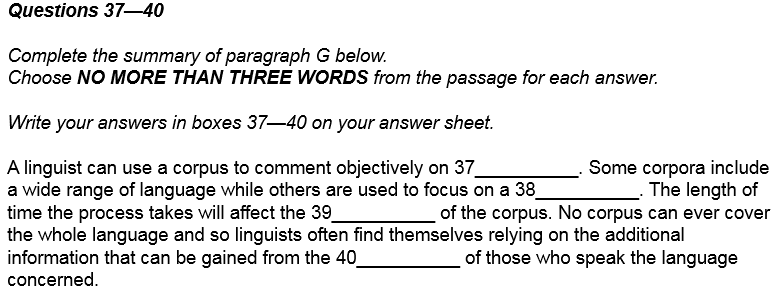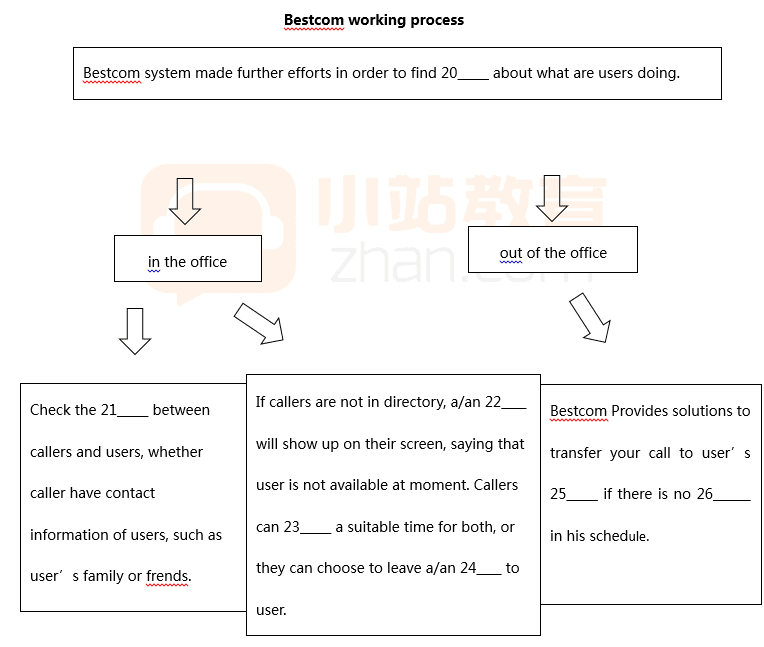托福阅读考察学生在学术背景环境下的英文书面理解能力,考试所选文章题材涵盖各个话题领域,那么有哪些题材是经常出现的呢?下面小编就和大家分享托福阅读四大必考题材梳理,来欣赏一下吧。
托福阅读四大必考题材梳理
第一类
印第安题材
1.白令海峡移民理论
2.印第安文化
3.印第安宗教观
4.印第安建筑业:大、先进。
5.印第安手工业:好。
6.社会组织结构:严密、分工细、凝聚力强。
7.农业先进:A.irrigation;B.maize,squash,bean,pea。
第二类
动植物题材(必考)
1.植物学题材(不多见)
①地衣、苔、真菌、蘑菇最常见。
②树冠上方生物。
③植物在生态平衡中的作用。
2.动物学题材(90%以上)
①考普通动物为多。最近常考鸟类、蚂蚁、动物智能与灭绝(联系天文学与冰河理论)。
②考动物进化(evolution)。
③考动物的分类(classification)。
phyla(单数phylum)—门 class—纲order—目 family—科 genus—属 species—种 carnivore/predator—食肉动物 herbivore—食草动物 omnivore—杂食动物
④动物的生活习性最为多见。
⑤群居(social animal)动物的习性
a)蚂蚁:社会组织结构—等级制(caste):交流方式—信息素—气味;生活来源;外来物种的有害性。
b)蜜蜂:群居个性;“8”字舞;蜜蜂智能;防御;天敌—大黄蜂。
c)大猩猩:智能:猩际关系
⑥迁徙(migration)
野鸭、大雁:日照长短;辨别方向。
⑦伪装(camouflage)、花拟态(mimicry)
第三类
考古学题材
1.文化(cultural)考古学
形态(physical)考古学(多见)
2.化石(fossil)
①化石构成。化石比原物更沉重(矿物质环境)
②化石形成原因。坚硬物质,迅速掩埋。
③化石与动物的进化关系。
3.人的左右手
①使用工具。证据:敲击的划痕;手柄的形状。
②牙齿上的划痕。
③大脑左右半球的大小差别;趾骨的粗细差别。
④作画时人像的方向
4.古代陶瓷的考古。
Clay,model,wheel(转盘),glaze,kiln
5.古代文字的考古。
第四类
美国历史题材
1.美国发展线索
①发现美洲阶段
哥伦布(意),为黄金、茶叶、香料
West/East Indian
影响:世界观变化;国家形势变化;(爱尔兰——土豆饥荒)
②英国定居阶段(English settlement)
1607第一个定居点Captain John S影响清教徒
1620五月花号
③殖民时期(colonial era)
④独立战争(American Revolution)
⑤新的国家(new nation)南北不均衡
⑥南北战争(Civil War)
⑦战后重建。持续近100年。
⑧西进运动 (Westward movement)
⑨工业化大增长
⑩world war I &; II End:1960
2.“大熔炉”:地理位置;民族融合1960’s;文化融合。
3.邮政。①快递;②铁路邮政。
托福阅读素材之小说里的经典名言
1. Honeydew by Edith Pearlman
伊迪丝·皮尔曼的《蜜露》
Pearlman writes quiet stories about theblips of tumult . She's been writing short stories -- and only short stories --for decades, chronicling the lives of earnest blue collar workers and whimsicalacademics. Most of the stories are set in her native Massachusetts; all of themreveal something tender and universal about everyday life.
皮尔曼安安静静的笔调下有些许动荡和喧嚣。她一直就在写短篇小说,而且数十年来只写短篇小说,记录着热忱勤勉的蓝领工人还有异想天开的学者们的生活。大部分的故事背景都设置在她的故土马萨诸塞州,每一则故事都展现了日常生活细小而普遍的一面。
2. Fools by Joan Silber
琼·西尔珀的《傻瓜》
Each story in Fools confronts the question:What makes an action foolish, as opposed to brave? And when is it better to befoolish, as opposed to steadfast in our established beliefs?
《傻瓜》中每一则故事都面临这样一个问题:比之勇敢,怎样的行为才算愚昧?与我们深信不疑的信念相对,何时做个傻瓜才是更好的选择?
3. Single, Carefree, Mellow by KatherineHeiny
凯瑟琳·海尼的《单身、随性、成熟》
Katherine Heiny writes stories that quietlyhighlight the dramas of dating life, from teenagehood through adulthood. Heinywrites about both lovers growing estranged through social media, and younggirls learning about the power of their own sexualities, with wry humor.
凯瑟琳·海尼的故事不动声色地突出了约会的戏剧色彩,从豆蔻年华到成年时期,不一而足。海尼不单单写因社交媒体而逐渐疏离的情侣,也写年轻女孩认识到其声色的威力,笔调不乏揶揄嘲讽。
4. When I Was a Child I Read Books byMarilynne Robinson
玛丽莲·罗宾逊《小时候,我读书》
Marilynne In When I Was a Child I Read Books,Robinson fluidly contemplates significance of community and the power of theindividual. You don't have to be a religious thinker to find beauty inRobinson's poetic musings.
《小时候,我读书》一书中,罗宾逊行文流畅,深思社区的重要性和个体的力量。读者即便不信奉宗教,也能发现罗宾逊富有诗意的哲思之美。
5. The Double Life of Liliane by Lily Tuck
莉莉·塔克《莉莲的双重生活》
Lily Tuck's latest novel isn't exactly amemoir, but it sits somewhere between novel and autobiography, blurring thelines between related memory and imagined possible scenarios. Like Tuck,heroine Liliane's parents divorced when she was young, wreaking personal havocthat mirrored the tragedies unfolding in Europe at the same time.
莉莉·塔克的最新小说确切说来不是回忆录,介于小说和自传间,模糊了记忆和想象场景的界限。和莉莉·塔克小时候一样,女主人翁莉莲年少父母离异,深受重创,也映照出同期欧洲的悲剧。
6. Neverhome by Laird Hunt
拉瑞德·亨特《不归》
Hunt tells his story about a womandisguised as a male solider through letters. The story is loosely based on abundle of letters Hunt stumbled upon written by a real undercover femalesoldier and is a smart work of historical fiction that encouragescontemplation.
亨特通过书信形式讲述了一个女子伪装成男军人的故事。亨特偶然间撞见一捆信件,是一个真实的卧底女军人所写的,亨特的历史小说稍稍以此为参照,引人深思,是部智慧的作品。
7. Infinite Home by Kathleen Alcott
凯思琳·奥尔科特《无限的家园》
Protagonist Edith has built a happy familyof her own among her tenants -- until she gets slammed with potential evictionas her mind begins to worsen. The unsteady state of their home and theirlandlady forges an even closer bond between the housemates in this lyricalmeditation on what really makes up a family.
主人公伊蒂丝与其房客们建立了一个幸福的家庭,然而,随着记性变差,她或将被驱逐。家庭不稳定,女房东与房客们的关系更紧密了。这部抒情的沉思录引人思考究竟何为组成家庭的要素。
8. Here by Richard McGuire
里查德·麦奎尔《这儿》
This book is a heartwarming time capsule,and fluid look at the way our interior lives have evolved, and how they'veremained the same.
这本书是温暖人心的时空胶囊,以温婉的视角看我们的内心演变以及又如何初心不变。
9. The Folded Clock by Heidi Julavits
海蒂·朱拉薇姿《折叠的时钟》
The Folded Clock is a Diary, a collectionof musings written offhandedly each day by its author. It's been scrubbed ofidentifying details, but otherwise remains a deeply personal collection ofthoughts about motherhood, language, and what success really means.
《折叠的时钟》是部日记,是作者每日随手写就的遐思集。书中隐去了透露身份的信息,但仍是身为人母的感想、对语言的思考和阐述成功之道的个人思想集。
10. Can't and Won't by Lydia Davis
莉迪娅·戴维斯《"不行"与"不能"》
Davis' stories are quick, dreamy snapshotsof a mood or a sentiment, and they take the shape of the idle thoughts thatmake up most of our days. Davis's spare language is comforting and digestible,but leaves ample room for contemplation and imagination, too.
戴维斯的故事轻松宜人、直击人心。故事取材于我们日常生活七零八碎的心思想法。戴维斯平实简练的语言安抚人心、易于理解,但有给读者足够想象和沉思的空间。
托福阅读真题原题+题目
According to anthropologists, people in preindustrial societies spent 3 to 4 hours per day or about 20 hours per week doing the work necessary for life. Modern comparisons of the amount of work performed per week, however, begin with the Industrial Revolution (1760-1840) when 10- to 12-hour workdays with six workdays per week were the norm. Even with extensive time devoted to work, however, both incomes and standards of living were low. As incomes rose near the end of the Industrial Revolution, it became increasingly common to treat Saturday afternoons as a half-day holiday. The half holiday had become standard practice in Britain by the 1870's, but did not become common in the United States until the 1920's.
In the United States, the first third of the twentieth century saw the workweek move from 60 hours per week to just under 50 hours by the start of the 1930's. In 1914 Henry Ford reduced daily work hours at his automobile plants from 9 to 8. In 1926 he announced that henceforth his factories would close for the entire day on Saturday. At the time, Ford received criticism from other firms such as United States Steel and Westinghouse, but the idea was popular with workers.
The Depression years of the 1930's brought with them the notion of job sharing to spread available work around; the workweek dropped to a modem low for the United States of 35 hours. In 1938 the Fair Labor Standards Act mandated a weekly maximum of 40 hours to begin in 1940, and since that time the 8-hour day, 5-day workweek has been the standard in the United States. Adjustments in various places, however, show that this standard is not immutable. In 1987, for example, German metalworkers struck for and received a 37.5-hour workweek; and in 1990 many workers in Britain won a 37-hour week. Since 1989, the Japanese government has moved from a 6- to a 5-day workweek and has set a national target of 1,800 work hours per year for the average worker. The average amount of work per year in Japan in 1989 was 2,088 hours per worker, compared to 1,957 for the United States and 1,646 for France.
1. What does the passage mainly discuss?
(A) Why people in preindustrial societies worked few hours per week
(B) Changes that have occurred in the number of hours that people work per week
(C) A comparison of the number of hours worked per year in several industries
(D) Working conditions during the Industrial Revolution
2. Compared to preiudustrial times, the number of hours in the workweek in the nineteenth century
(A) remained constant
(B) decreased slightly
(C) decreased significantly
(D) increased significantly
3. The word norm in line 5 is closest in meaning to
(A) minimum.
(B) example
(C) possibility
(D) standard
4. The word henceforth in line 13 is closest in meaning to
(A) in the end
(B) for a brief period
(C) from that time on
(D) on occasion
5. The idea mentioned in line 15 refers to
(A) the 60-hour workweek
(B) the reduction in the cost of automobiles
(C) the reduction in the workweek at some automobile factories
(D) the criticism of Ford by United States Steel and Westinghouse
6. What is one reason for the change in the length of the workweek for the average worker in the
United States during the 1930's?
(A) Several people sometimes shared a single job.
(B) Labor strikes in several countries influenced labor policy in the United States.
(C) Several corporations increased the length of the workweek.
(D) The United States government instituted a 35-hour workweek.
7. Which of the following is mentioned as one of the purposes of the Fair Labor Standards Act of
1938 ?
(A) to discourage workers from asking for increased wages
(B) to establish a limit on the number of hours in the workweek
(C) to allow employers to set the length of the workweek for their workers
(D) to restrict trade with countries that had a long workweek
8. The word mandated in line 18 is closest in meaning to
(A) required
(B) recommended
(C) eliminated
(D) considered
9. The word immutable in line 21 is closest in meaning to
(A) unmatched
(B) irregular
(C) unnecessary
(D) unchangeable
10. Which of the following is NOT mentioned as evidence that the length of the workweek has
been declining since the nineteenth century?
(A) The half-day holiday (line 7)
(B) Henry Ford (lines 11-12)
(C) United States Steel and Westinghouse (line 14-15)
(D) German metalworkers (line 21)
11. According to the passage , one goal of the Japanese government is to reduce the average
annual amount of work to
(A) 1,646 hours
(B) 1,800 hours
(C) 1,957 hours
(D) 2,088 hours
PASSAGE 40 BDDCC ABADCB
英语阅读相关文章:
★ 高一英语阅读理解及答案
★ 如何快速阅读英语文章
★ 2020年中考英语阅读
★ 高一英语短篇阅读理解试题
★ 2020年中考英语阅读提分技巧
★ 2018年6月英语六级阅读理解-4附翻译
★ 高三英语老师个人教学总结5篇
★ 高三英语教学个人工作总结大全
★ 高三英语老师个人教学总结2020范文
★ 高中三年级英语教学工作总结大全
托福阅读四大必考题材梳理
上一篇:托福阅读中怎么清晰度审题
下一篇:托福阅读精读练习小攻略





